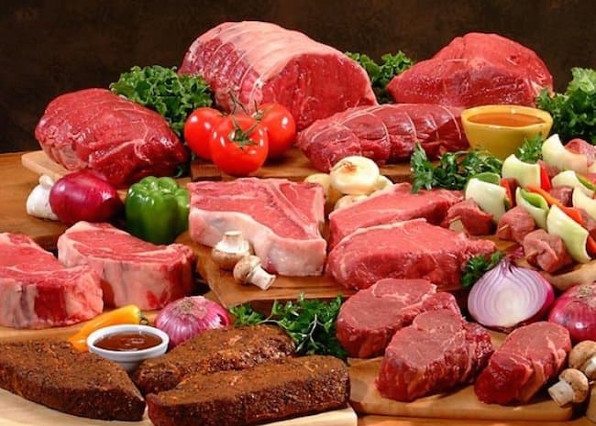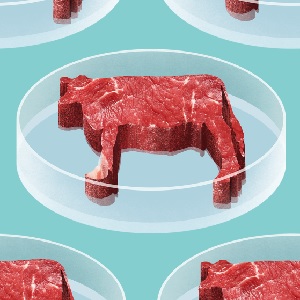We’ve been in undated lately with news from the Plant-based Meat Substitute industry about developments in their technology and the incredible popularity of their products. But what’s been going on in the competing, Lab Grown Meat sector. Inquiring Carnivores want to know…
 All this and more may soon be growable in the Lab without the involvement
All this and more may soon be growable in the Lab without the involvement
of any real animals. The problem of reproducing realistic appearance,
structure and texture in Lab-grown meats may be solved…
It seems like months (though it’s probably just been a few weeks) since we heard anything from the folks who are struggling to perfect Lab Grown Meat. Their quiet struggle, top produce realistically textured and structured meat products has taken a back seat to the burgeoning efforts of the Plant-based Meat Substitute industry, which has been exploding onto the marketplace with products like Beyond Meat, the Impossible Burger, and similar formulations designed to mimic Meat.
Maybe a major breakthrough
Now, scientists at Harvard’s John A. Paulson School of Engineering and Applied Sciences say they’ve come up with a method of creating a web-like matrix on which cultured meat cells can grow in an approximation of actual animal muscle structure.
The answer came from research that’s been going on for sometime into growing replacement tissues and organs for human transplantation. Project leader Dr. Kit Parker noted that, when culturing replacement tissues for human use, researchers have long used structural matrices to guide the development of the new living cells into the desired shapes and textures.
Animal meat consists mostly of skeletal muscle (and fat tissue) which grow in long, thin fibers – as can be seen in the grain of a steak or when shredding pork or chicken. Reproducing these fibers is one of the biggest challenges in bioengineering meat.
“Muscle cells are adherent cell types, meaning they need something to hold onto as they grow,” said Dr. Luke Macqueen, First Author of the study report. “To grow muscle tissues that resembled meat, we needed to find a ‘scaffold’ material that was edible and allowed muscle cells to attach and grow in 3D. It was important to find an efficient way to produce large amounts of these scaffolds to justify their potential use in food production.”
The solution to the scaffold material problem turned out to be as simple as Gelatin. It’s edible, flavourless and neutral in many other respects, and is cheap and easy to make. A fibre-spinning process developed by Parker proved the initial step in creating an appropriate structural matrix on which to grow Meat tissues.
On the right track
Early experiments proved the researchers were on the right track. But there were still some refinements and issues related to scaling up the method to grow commercial volumes of realistic Meats.
“When we analyzed the microstructure and texture, we found that, although the cultured and natural products had comparable texture, natural meat contained more muscle fibers, meaning they were more mature,” said Macqueen. “Muscle and fat cell maturation in vitro are still a really big challenge that will take a combination of advanced stem cell sources, serum-free culture media formulations, edible scaffolds such as ours, [and] advances in bioreactor culture methods to overcome.”
But research into lab-growing realistic animal Meats of all kinds, with realistic texture, structure, appearance and flavour seems to have gotten past a major roadblock that was holding it back.
We’ll keep an eye on this development and future advances in the art and science of Lab-culturing Meat, as they appear…
~ Maggie J.

